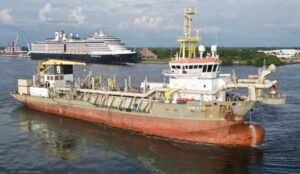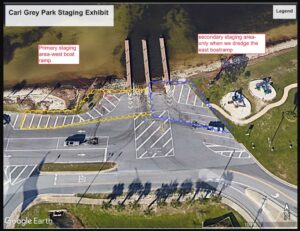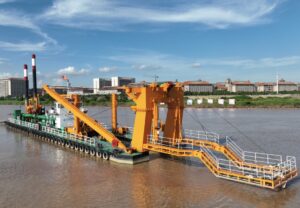Panama Canal Expansion Program 2010, Introduction
The Panama Canal is a 77 km (48 mi) ship canal in Panama that joins the Atlantic Ocean and the Pacific Ocean and is a key conduit for international maritime trade. Annual traffic has risen from about 1,000 ships in the canal’s early days to 14,702 vessels in 2008, displacing a total 309.6 million Panama Canal/Universal Measurement System (PC/UMS) tons.
One of the largest and most difficult engineering projects ever undertaken, the canal had an enormous impact on shipping between the two oceans, replacing the long and treacherous route via the Drake Passage and Cape Horn at the southernmost tip of South America. A ship sailing from New York to San Francisco via the canal travels 9,500 km (5,900 mi), well under half the 22,500 km (14,000 mi) route around Cape Horn.
Post-Panamax Locks
Construction of new Post-Panamax locks on the Pacific and Atlantic sides. The new locks complexes will have three chambers each with water-saving basins, a lateral filling and emptying system and rolling gates.
Pacific Access Channel
Excavation of the new Pacific Post-Panamax locks north access channel. The project requires the dry excavation of approximately 49 million cubic meters of material along 6.1 kilometers. Executed in four different phases (PACs 1 – 4).
Improvements to Navigational Channels
Involves dredging of the existing navigation channels to enable the safe navigation of Post-Panamax vessels through the expanded Canal.
Improvements to Water Supply
Calls for an increase of Gatun Lake’s maximum operating level by 45 centimeters to improve Canal water supply and draft dependability.
Excavation of the Pacific Access Channel Phase 1
This contract, which was concluded during the first quarter of 2010, was awarded to Panama-based Constructora Urbana S.A. (CUSA) on July 17, 2007, for a total of $41.1 million. Activities included the leveling of Paraiso Hill, from its original 136 meters to 46 meters above sea level. In achieving this, CUSA removed a total of 7.3 million cubic meters of material. The contract also included the clearing of a total 146 hectares of firing ranges, also known as MEC (munitions and explosives of concern) areas, and the relocation of 3.4 kilometers of the Borinquen Road.
Excavation of the Pacific Access Channel Phase 2
Cilsa Panama – Minera Maria was responsible for the execution of the second dry excavation contract, which was completed during the first quarter of 2010. The contract was awarded on November 27, 2007, for a total of $25.5 million. Activities under the contract involved the removal of 7.4 million cubic meters of material, the 3.5-kilometer diversion of the Cocoli River and the relocation of 1.5 kilometers of the Borinquen Road. Construction of this road began in May 2008.
Excavation of the Pacific Access Channel Phase 3
The ACP awarded this contract on December 16, 2008, to Constructora Meco S.A., for a total of $36.6 million. This contract includes the excavation, removal and disposition of 8.2 million cubic meters of material, the leveling of Paraiso Hill from 46 to 27.5 meters above sea level and the clearing of 190 hectares of MEC areas.
Excavation of the Pacific Access Channel Phase 4
On January 7, 2010, the ACP awarded the fourth Pacific Access Channel dry-excavation contract (PAC-4) to consortium ICA-FCC-MECO, for a total of $267,798,795.99.
[mappress]
Source: Panama Canal Authority, June 18, 2010








